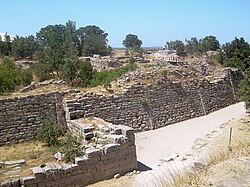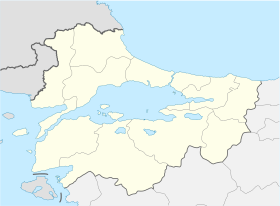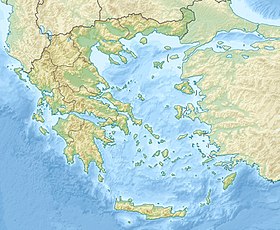
Back Troje Afrikaans Troja ALS ትሮያ Amharic Troya AN Trōia ANG طروادة Arabic طرواده ARZ Troya AST Troya Azerbaijani تروآ (شهر) AZB
Walls of Late Bronze Age Troy | |
| Location | Hisarlık, Çanakkale Province, Turkey |
|---|---|
| Region | Troad |
| Coordinates | 39°57′27″N 26°14′20″E / 39.95750°N 26.23889°E |
| Part of | Historical National Park of Troia |
| Site notes | |
| Website | https://whc.unesco.org/en/list/849/ |
| Type | Cultural |
| Designated | 1998 (22nd session) |
| Reference no. | 849 |
| UNESCO Region | Europe and North America |
Troy (Ancient Greek: Τροία, romanized: Troíā; Latin: Trōia; Hittite: 𒆳𒌷𒋫𒊒𒄿𒊭, romanized: Truwiša/Taruiša) or Ilion (Ancient Greek: Ίλιον, romanized: Ī́lion, Hittite: 𒌷𒃾𒇻𒊭, romanized: Wiluša)[1][2][3][4] was an ancient city located in present-day Hisarlık (near Tevfikiye), Turkey. The place was first settled around 3600 BC and grew into a small fortified city around 3000 BC. During its four thousand years of existence, Troy was repeatedly destroyed and rebuilt. As a result, the archeological site that has been left is divided into nine layers, each corresponding to a city built on the ruins of the previous. Archaeologists refer to these layers using Roman numerals. Among the early layers, Troy II is notable for its wealth and imposing architecture. During the Late Bronze Age, Troy was called Wilusa and was a vassal of the Hittite Empire. The final layers (Troy VIII-IX) were Greek and Roman cities which in their days served as tourist attractions and religious centers because of their link to mythic tradition.
The archaeological site is open to the public as a tourist destination, and was added to the UNESCO World Heritage list in 1998. The site was excavated by Heinrich Schliemann and Frank Calvert starting in 1871. Under the ruins of the classical city, they found the remains of numerous earlier settlements. Several of these layers resemble literary depictions of Troy, leading some scholars to conclude that there is a kernel of truth underlying the legends. Subsequent excavations by others have added to the modern understanding of the site, though the exact relationship between myth and reality remains unclear and there is no definitive evidence for a Greek attack on the city.[5][6](ppxiv, 180–182)
- ^ Korfmann, Manfred O. (2007). Winkler, Martin M (ed.). Troy: From Homer's Iliad to Hollywood epic. Oxford, England: Blackwell Publishing Limited. p. 25. ISBN 978-1-4051-3183-4.
"Troy or Ilios (or Wilios) is most probably identical with Wilusa or Truwisa... mentioned in the Hittite sources
- ^ Burney, Charles (2004). "Wilusa". Historical dictionary of the Hittites. Metuchen, NJ: Scarecrow Press. p. 311. ISBN 978-0-8108-4936-5.
- ^ Beekes, R.S.P. (2009). Etymological Dictionary of Greek. Brill. p. 588.
- ^ Said, Suzanne; Webb, Ruth (2011). Homer and the Odyssey. Oxford University Press. p. 77.
- ^ Jablonka, Peter (2011). "Troy in regional and international context". In Steadman, Sharon; McMahon, Gregory (eds.). The Oxford Handbook of Ancient Anatolia. Oxford University Press. p. 725. doi:10.1093/oxfordhb/9780195376142.013.0032.
Since neither inscriptions confirming the Iliad nor definite proof for a violent destruction by invaders from Greece have been discovered at Troy...
- ^ Cite error: The named reference
Bryce-2005was invoked but never defined (see the help page).



